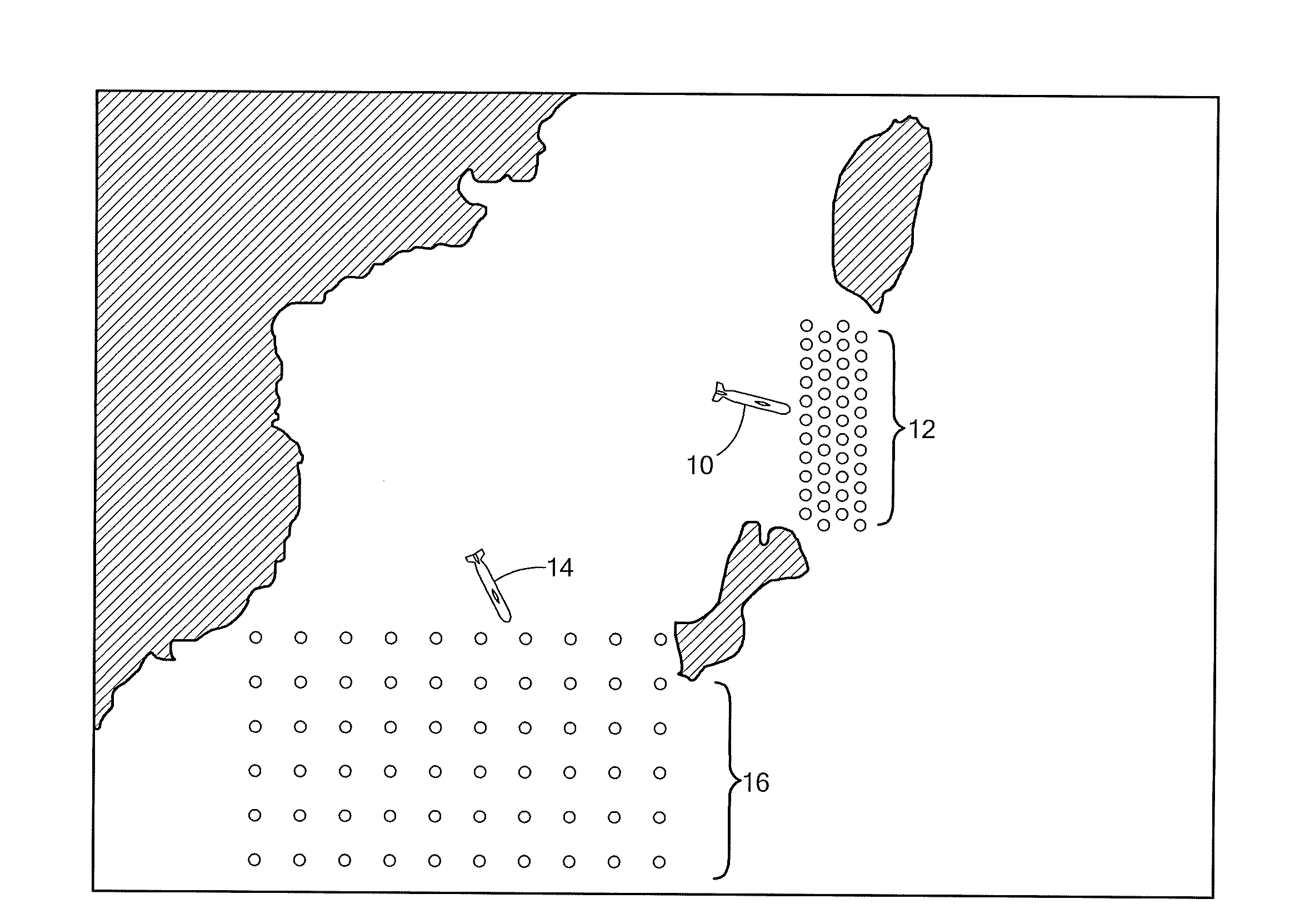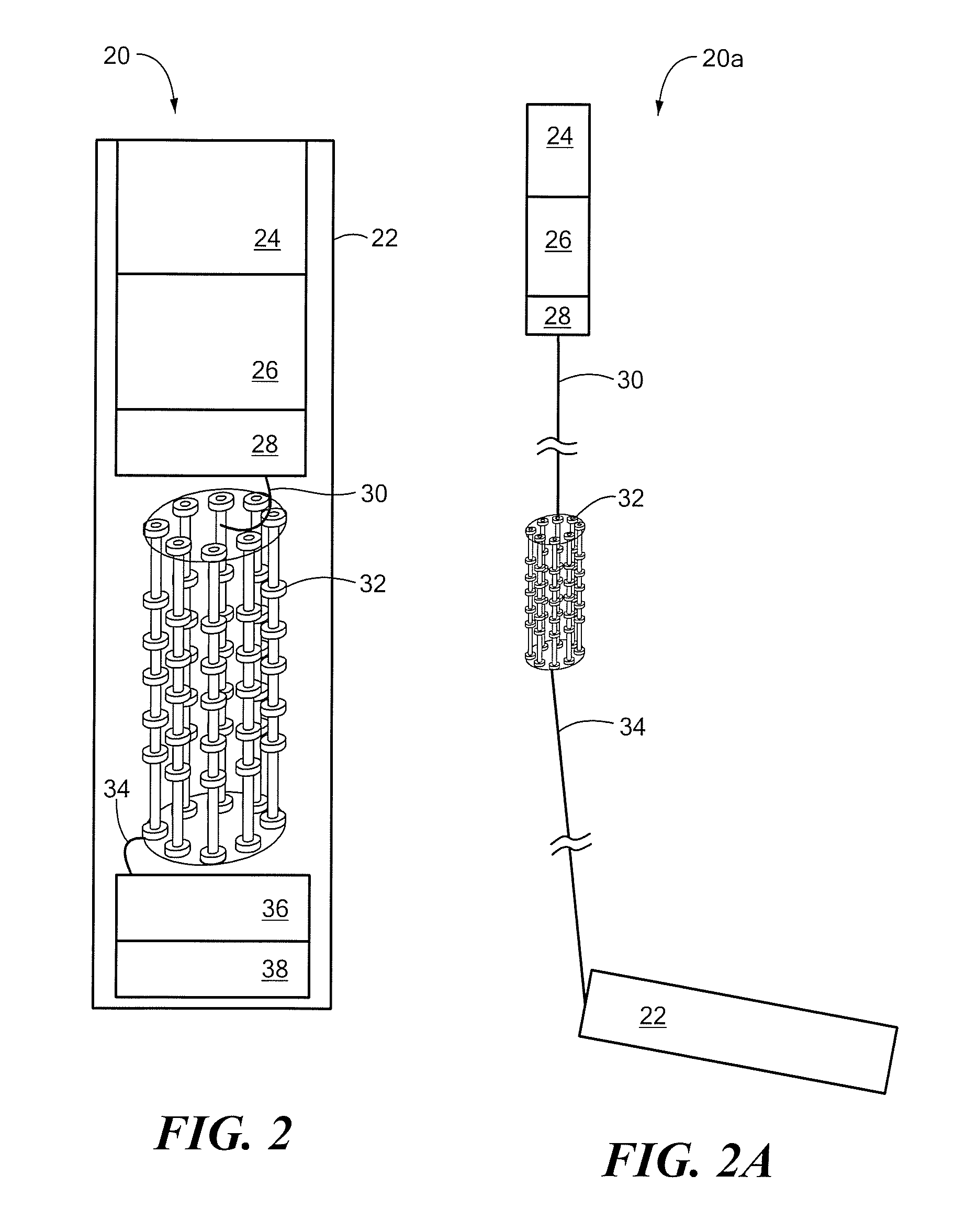Autonomous Sonar System and Method
a sonar system and autonomous technology, applied in direction finders, direction finders using ultrasonic/sonic/infrasonic waves, instruments, etc., can solve the problems of system not being autonomous, difficult to detect, and not being able to detect, localize, track or classify targets in water
- Summary
- Abstract
- Description
- Claims
- Application Information
AI Technical Summary
Benefits of technology
Problems solved by technology
Method used
Image
Examples
Embodiment Construction
[0066]Before describing the autonomous sonar system and method, some introductory concepts and terminology are explained. It is known that sound can travel through the water in so-called “propagation paths,” which can be non-straight paths, particularly when the propagation paths extend over appreciable distances, e.g., miles. The propagation paths can be modeled with propagation models. Some propagation models assume that the sound travels in straight propagation paths. These models are often referred to as isovelocity models, since they presume that sound travels at the same sound speed at all water depths. Other propagation models do not assume that the sound travels in straight propagation paths. These models, which are sometimes referred to as “ray trace” models, can be used to more accurately predict the sound propagation paths and the resulting sound that arrives at a point in the ocean, for example at a sonar system that receives sound from an underwater target. Other propag...
PUM
 Login to View More
Login to View More Abstract
Description
Claims
Application Information
 Login to View More
Login to View More - R&D
- Intellectual Property
- Life Sciences
- Materials
- Tech Scout
- Unparalleled Data Quality
- Higher Quality Content
- 60% Fewer Hallucinations
Browse by: Latest US Patents, China's latest patents, Technical Efficacy Thesaurus, Application Domain, Technology Topic, Popular Technical Reports.
© 2025 PatSnap. All rights reserved.Legal|Privacy policy|Modern Slavery Act Transparency Statement|Sitemap|About US| Contact US: help@patsnap.com



